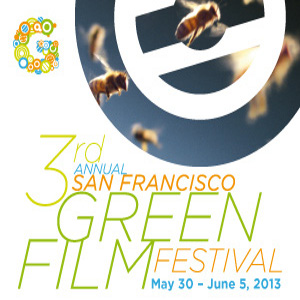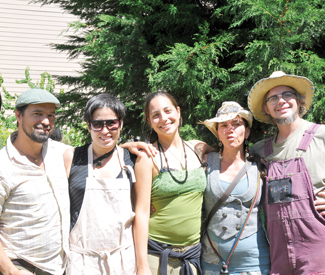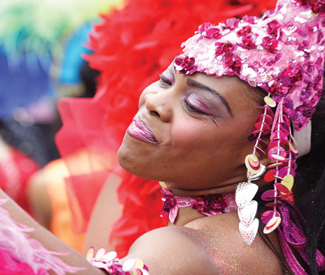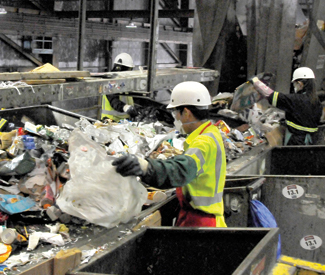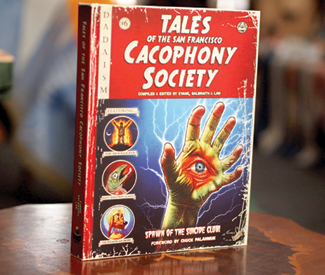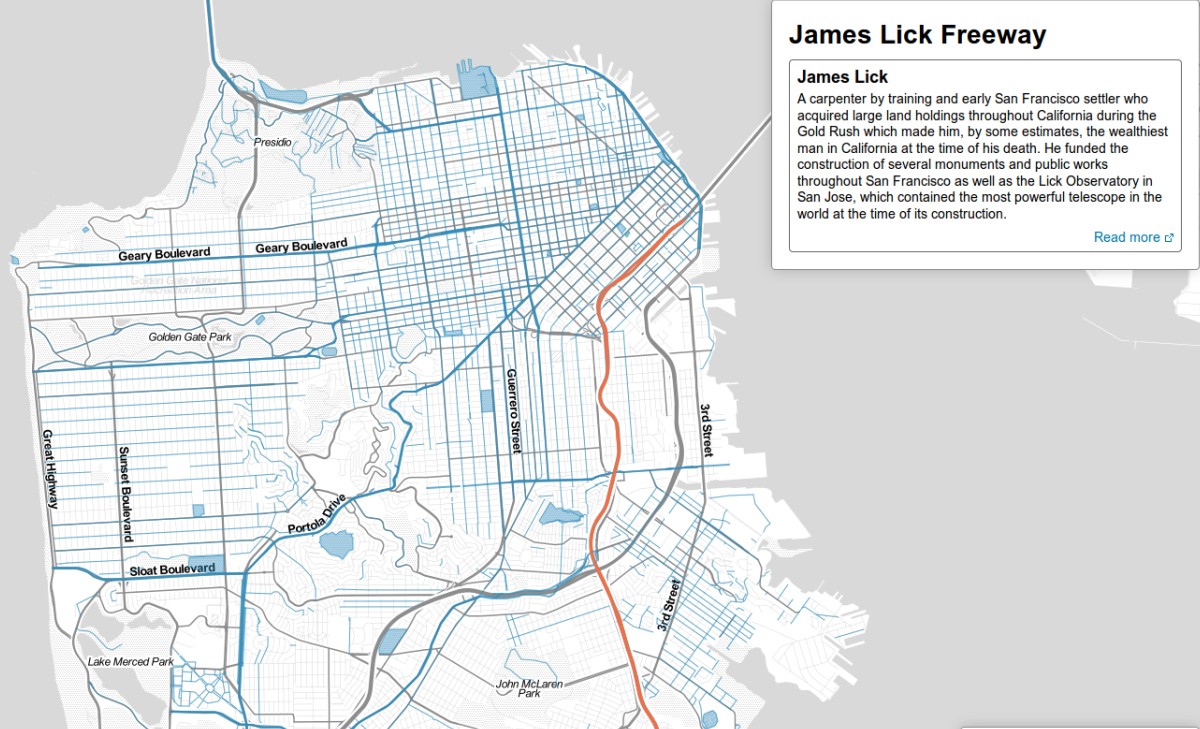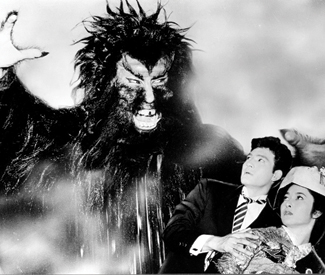Music listings are compiled by Emily Savage. Since club life is unpredictable, it’s a good idea to call ahead or check the venue’s website to confirm bookings and hours. Prices are listed when provided to us. Visit www.sfbg.com/venue-guide for venue information. Submit items for the listings at listings@sfbg.com. For further information on how to submit items for the listings, see Picks.
WEDNESDAY 22
ROCK/BLUES/HIP-HOP
Atriach, Wild Hunt, Lycus, Caffa Thee Parkside. 8pm, $10.
Belle Noire, Great Work, Soonest Bottom of the Hill. 9pm, $10.
Boris, deafheaven Rickshaw Stop. 8pm, $18.
Matthew Dear Mezzanine. 8:30pm, $20.
Quinn DeVeaux Rite Spot. 8:30pm.
Gunshy Johnny Foley’s. 10pm, free.
Hanzel and Gretyl DNA Lounge. 8pm, $13.
Jason Marion vs Susan Johnny Foley’s Dueling Pianos. 10pm, free.
Mortar and Pestle, Visibles, Great Spirits Brick and Mortar Music Hall. 9pm, $8.
Nick Moss Biscuits and Blues. 8 and 10pm, $20.
Shout Out Louds Great American Music Hall. 8pm, $19.
Slippery Slope, Lady Elaine, Easy Reader Tupelo, 1337 Grant, SF; (415) 981-9177. 8pm, free.
Speck Mountain Hemlock Tavern. 8:30pm, $7.
Twin Trilogy, Tomb Weavers, Andrew Graham and Swarming Branch Elbo Room. 9pm, $7.
JAZZ/NEW MUSIC
Big Bones Royal Cuckoo, 3203 Mission, SF; www.royalcuckoo.com. 7:30-10:30pm, free.
Dink Dink Dink, Gaucho, Eric Garland’s Jazz Session Amnesia. 7pm, free.
Terry Disley Burritt Room, 417 Stockton, SF; www.burrittavern.com. 6-9pm, free.
29th Swingtet Tupelo, 1337 Grant, SF; www.tupelosf.com. 9:30pm.
FOLK/WORLD/COUNTRY
Quinn DeVeaux Rite Spot Café. 8:30pm.
Jesse y Joy Regency Ballroom. 8pm, $27.50-$40.
DANCE CLUBS
Booty Call Q-Bar, 456 Castro, SF; www.bootycallwednesdays.com. 9pm. Juanita MORE! and Joshua J host this dance party.
Cash IV Gold Double Dutch, 3192 16th St, SF; www.thedoubledutch.com. 9pm, free.
Coo-Yah! Slate Bar, 2925 16th St, SF; www.slate-sf.com. 10pm, free. With Vinyl Ambassador, DJ Silverback, DJs Green B and Daneekah
Full-Step! Tunnel Top. 10pm, free. Hip-hop, reggae, soul, and funk.
Hardcore Humpday Happy Hour RKRL, 52 Sixth St, SF; (415) 658-5506. 6pm, $3.
Jukebox Baby Monarch. 9pm, $8. With Actually, Silent Pictures, DJ Johnny the Boy, Jungle Sniff.
Martini Lounge John Colins, 138 Minna, SF; www.johncolins.com. 7pm. With DJ Mark Divita.
Stay Sick Monarch. 9pm, free. With DJ Omar.
Timba Dance Party Bissap Baobab, 3372 19 St, SF; www.bissapbaobao.com. 10pm, $5.
THURSDAY 23
ROCK/BLUES/HIP-HOP
Beets, Fine Steps, Tiaras Hemlock Tavern. 8:30pm, $8.
Black Cobra, Ken Mode, Judgement Day Thee Parkside. 9:30pm, $10.
Bobby Joe Ebola and the Children Macnuggits, Water Tower, Tornado Rider, Mystic Knights of the Cobra Great American Music Hall. 8pm, $16.
Cold War Kids, SUPERHUMANOIDS Regency Ballroom. 8pm, $25.
Craig and Meredith Rite Spot. 8:30pm.
Detroit Cobras, Pangea, Chaw Slim’s. 9pm, $16-$18.
Front Country, Laura Cortese, Mariel Vandersteel, Valerie Thomas, Roosevelt Dime Brick and Mortar Music Hall. 9pm, $10.
Infernoh, Permanent Ruin, Merdoso, Effluxus Knockout. 10pm, $8.
Sonny Landreth Yoshi’s SF. 8pm, $26.
Dave Moreno and Friends Johnny Foley’s. 10pm, free.
Jackie Payne Biscuits and Blues. 8 and 10pm, $20.
Sir Sly, JMSN, Dresses Bottom of the Hill. 9pm, $10.
Sons of Fathers, Builder and the Butchers Café Du Nord. 8pm, $10.
Susan vs Jason Marion Johnny Foley’s Dueling Pianos. 10pm, free.
Ted Tones Chapel, 777 Valencia, SF; www.thechapelsf.com. 9pm, free.
Victoria and Vaudevillians, Unwoman, Blah Boutique DNA Lounge. 8pm, $13.
Youngblood Hawke, Pacific Air, popscene DJs Rickshaw Stop. 9:30pm, $13-$17.
JAZZ/NEW MUSIC
Craig and Meredith Rite Spot Café. 8:30pm.
Spencer Day Feinstein’s at the Nikko, 222 Mason, SF; www.ticketweb.com. 8pm, $55-$75.
Jack Curtis Dubowsky Ensemble: Current Events Luggage Store Gallery, 1007 Market, SF; www.outsound.org. 8pm, $6-$10.
Chris Sibert Royal Cuckoo, 3203 Mission, SF; www.royalcuckoo.com. 7:30-10:30pm, free.
FOLK/WORLD/COUNTRY
Gigi Amos Tupelo, 1337 Grant, SF; www.tupelosf.com. 9pm.
DANCE CLUBS
Afrolicious Elbo Room. 9:30pm, $5. DJs Pleasuremaker and Señor Oz spin Afrobeat, Tropicália, electro, samba, and funk.
All 80s Thursday Cat Club. 9pm, $6 (free before 9:30pm). The best of ’80s mainstream and underground.
Foxy Monarch Lounge. 9pm, free. With DJ Kizmiaz.
Pa’lante! Bissap Baobab, 3372 19 St, SF; www.bissapbaobao.com. 10pm, $5. With DJs Juan G, El Kool Kyle, Mr. Lucky.
Pompeya, DJ Mykill, Matt Haze Monarch. 9pm, $8.
Psymbionic Mighty. 10pm, $10.
Ritual Temple. 10pm-3am, $5. Two rooms of dubstep, glitch, and trap music.
Tropicana Madrone Art Bar. 9pm, free. Salsa, cumbia, reggaeton, and more with DJs Don Bustamante, Apocolypto Sr. Saen, Santero, and Mr. E.
FRIDAY 24
ROCK/BLUES/HIP-HOP
Black Moth Super Rainbow, Hood Internet, Oscillator Bug Fillmore. 9pm, $19.50.
Ian Franklin and Infinite Frequency Simple Pleasures, 3434 Balboa, SF; www.ianfranklinmusic.com. 7:30pm.
Inc., Dam Funk Mezzanine. 9pm, $15-$17.
Imperial Teen, Churches, Gone to Ground Bottom of the Hill. 10pm, $12.
Kinski, Phil Manley Life Coach Hemlock Tavern. 9:30pm, $10.
Gino Matteo Biscuits and Blues. 8 and 10pm, $20.
Presidents of the United States of America Independent. 9pm, $20.
Sea Lions, Still Flyin’, Burnt Palms Café Du Nord. 9:30pm, $10.
Sole Johnny Foley’s. 10pm, free.
Stornway Brick and Mortar Music Hall. 7pm, $15.
Tainted Love, Stung Bimbo’s. 9pm, $25.
TSOL, VKTMS, Rush and Attack Thee Parkside. 9pm, $13.
This Charming Band, Purple Ones, Jean Genies Slim’s. 9pm, $15.
Twin Shadow, Elliphant Great American Music Hall. 9pm, $23-$25.
Greg Zema, Susan, Jason Marion Johnny Foley’s Dueling Pianos. 10pm, free.
JAZZ/NEW MUSIC
Audium 1616 Bush, SF; www.audium.org. 8:30pm, $20. Theater of sound-sculptured space.
Spencer Day Feinstein’s at the Nikko, 222 Mason, SF; www.ticketweb.com. 8pm, $55-$75.
Dyadic Resonance: New Music by Zachary James Watkins Center for New Music, 55 Taylor, SF; www.centerfornewmusic.com. 7:30pm, $15.
Hammond Organ Soul Jazz, Blues Party Royal Cuckoo, 3203 Mission, SF; www.royalcuckoo.com. 7:30-10:30pm, free.
James Moore Unitarian Universalist Society of San Francisco Chapel, 1187 Franklin, SF; www.tangentguitarseries.com. 7:30pm, $15.
Diana Reeves SF Jazz Center, 201 Franklin, SF; www.sfjazz.org. 7:30pm, $30-$70.
Peter White Yoshi’s SF. 8pm, $29; 10pm, $22.
FOLK/WORLD/COUNTRY
Sambada Brick and Mortar Music Hall. 10pm, $10.
Sinister Dexter Tupelo, 1337 Grant, SF; www.tupelosf.com. 9pm.
DANCE CLUBS
Fag Fridays DNA Lounge. 10pm, $10. Monthly gay dance party with Quentin Harris and David Harness.
Joe Lookout, 3600 16th St.,SF; www.lookoutsf.com. 9pm. Eight rotating DJs, shirt-off drink specials.
Night Moves: Lazarao Casanova Monarch. 9pm, $10.
Old School JAMZ El Rio. 9pm. Fruit Stand DJs spinning old school funk, hip-hop, and R&B.
120 Minutes Elbo Room. 10pm, $15. With Mater Suspiria Vision, How I Quit Crack, S4NtA MU3rTE, Chauncey CC.
Paris to Dakar Little Baobab, 3388 19th St, SF; (415) 643-3558. 10pm, $5. Afro and world music with rotating DJs including Stepwise, Steve, Claude, Santero, and Elembe.
SATURDAY 25
ROCK/BLUES/HIP-HOP
Blue Diamond Fillups Riptide. 9:30pm, free.
BOAT, Gold Bears, Surf Club Hemlock Tavern. 9:30pm, $8.
Bobby Love and Sugar Sweet Johnny Foley’s. 10pm, free.
Mikal Cronin, Audacity, Michael Stasis Rickshaw Stop. 9pm, $10-$12.
Gentlemen’s Heroes, Who Does That?, Red Shift Thee Parkside. 3pm, free.
Kylesa, Blood Ceremony, White Hills, Lazer, Wulf Slim’s. 8pm, $16.
Presidents of the United States of America Independent. 9pm, $20.
Sudor, Kurraka, Replica El Rio 10pm, $7.
Susan, Jason Marion Johnny Foley’s Dueling Pianos. 10pm, free.
Tainted Love, Minks Bimbo’s. 9pm, $25.
Tera Melos, TTNG, Evkain Bottom of the Hill. 9:30pm, $14.
Earl Thomas and the Blues Ambassadors Biscuits and Blues. 8 and 10pm, $24.
Twin Shadow, Elliphant Great American Music Hall. 9pm, $23-$25.
Warbringer, Hatchet, Vektor, Apothesary Thee Parkside. 9pm, $15.
JAZZ/NEW MUSIC
Audium 1616 Bush, SF; www.audium.org. 8:30pm, $20. Theater of sound-sculptured space.
Spencer Day Feinstein’s at the Nikko, 222 Mason, SF; www.ticketweb.com. 7pm, $55-$75.
Hammond Organ Soul Jazz, Blues Party Royal Cuckoo, 3203 Mission, SF; www.royalcuckoo.com. 7:30-10:30pm, free.
North Beach Brass Band Brunch Tupelo, 1337 Grant, SF; www.tupelosf.com. 1:30pm.
Diana Reeves SF Jazz Center, 201 Franklin, SF; www.sfjazz.org. 7:30pm, $35-$85.
Lavay Smith and her Red Hot Skillet Lickers, Big Bones Yerba Buena Gardens, Mission between Third and Fourth Streets, SF; www.ybgfestival.org. 1-2:30pm.
Voicehandler and Zeek Sheck Center for New Music, 55 Taylor, SF; www.centerfornewmusic.com. 7:30pm, $15.
Peter White Yoshi’s SF. 8pm, $29; 10pm, $25.
FOLK/WORLD/COUNTRY
Cradle Duende and Safiya Red Poppy Art House. 8pm, $10-$20.
Sambada Brick and Mortar Music Hall. 10pm, $10.
DANCE CLUBS
Bootie SF: Mashup Prom DNA Lounge. 9pm, $10-$15. With DJ Tripp, Faroff, Dada, Smash-Up Derby.
Claptone, Steve Huerta, Bells and Whistles Monarch. 9:30pm, $10.
Lights Down Low Seventh Anniversary Mezzanine. 9pm, $18-$22. With Azari and III, Lee Foss, Todd Terry, LDL DJs, BT Magnum.
Paris to Dakar Little Baobab, 3388 19th St, SF; (415) 643-3558. 10pm, $5. Afro and world music with rotating DJs.
Temptation Cat Club. 9:30pm. $5–<\d>$8. Indie, electro, new wave video dance party.
SUNDAY 26
ROCK/BLUES/HIP-HOP
Big Long Now, Adult Dude Hemlock Tavern. 9pm, $7.
Dave Moreno and Friends Johnny Foley’s. 10pm, free.
Goh Nakamura, Jane Lui, Paul Dateh Café Du Nord. 7:30pm, $10.
Tropical Popsicle, Bixby Knolls, Panic is Perfect Bottom of the Hill. 9:30pm, $9.
Qwel and Maker, Rec League, Genie, DJ Mr. Bean, Johnny 5 Brick and Mortar Music Hall. 9pm, $15.
JAZZ/NEW MUSIC
Gospel Gators of San Francisco State University Yoshi’s SF. 7 and 9pm, $25.
Diana Reeves SF Jazz Center, 201 Franklin, SF; www.sfjazz.org. 7:30pm, $30-$70.
Lavay Smith Royal Cuckoo, 3203 Mission, SF; www.royalcuckoo.com. 7:30-10:30pm, free.
FOLK/WORLD/COUNTRY
Brazil and Beyond Bissap Baobab, 3372 19 St, SF; www.bissapbaobao.com. 6:30pm, free.
Marshall Law Tupelo, 1337 Grant, SF; www.tupelosf.com. 4-7pm, free.
Silver Threads, Sevon and the Lovesick Ramblers Thee Parkside. 4pm, free.
DANCE CLUBS
As You Like It Monarch. 9pm, $15. With Magic Mountain High, Move D, Dave Anju, Mossmoss, Rich Korach.
Beats for Brunch Thee Parkside. 11am, free.
Creeme Fraiche ft. Mrs. Blythe Monarch Lounge. 9pm, free.
Dub Mission Elbo Room. 9pm, $10. With Twilight Circus Dub Sound System.
Espirit du Monde Bissap Baobab, 3372 19 St, SF; www.bissapbaobao.com. 9pm, $5. Carnival after-party with DJs Cecil, Orfeu Negro, Son of Son.
Jock Lookout, 3600 16th St, SF; www.lookoutsf.com. 3pm, $2.
Stompy and Sunset, DJ Deep Café Cocomo, 650 Indiana, SF; www.cafecocomo.com. 2pm, $10-$20.
Trannyshack: Madonna Tribute DNA Lounge. 9:30pm, $15. With Heklina, Becky Motorlodge, Exhibit Q, Raya Light, Cookie Dough, and more.
MONDAY 27
ROCK/BLUES/HIP-HOP
Better Maker, An Isotope, Jordan River Brick and Mortar Music Hall. 9pm, $9.
Damir Johnny Foley’s. 10pm, free.
“Shit Kickin’ Memorial Day” El Rio. 4pm, $10. With 77 El Deora, Evangenitals, Kit and the Branded Men, Patsychords.
FOLK/WORLD/COUNTRY
Seva Kirtan Palace of Fine Arts Theater, 3301 Lyon, SF; www.seva.org. 7pm, $40-$150.
Slowpoke Tupelo, 1337 Grant, SF; www.tupelosf.com. 9pm.
DANCE CLUBS
Crazy Mondays Beauty Bar, 2299 Mission, SF; www.thebeautybar.com. 10pm, free. Hip-hop and other stuff.
Death Guild DNA Lounge. 9:30pm, $3-$5. With Decay, Joe Radio, Meltin Girl.
DJ Jules, Jacob, Alden Monarch. 8pm, free.
M.O.M. Madrone Art Bar. 6pm, free. DJs Timoteo Gigante, Gordo Cabeza, and Chris Phlek playing all Motown every Monday.
Soul Cafe John Colins Lounge, 138 Minna, SF; www.johncolins.com. 9pm. R&B, Hip-Hop, Neosoul, reggae, dancehall, and more with DJ Jerry Ross.
Vibes’N’Stuff El Amigo Bar, 3355 Mission, SF; (415) 852-0092. 10pm, free. Conscious jazz and hip-hop with DJs Luce Lucy, Vinnie Esparza, and more.
TUESDAY 28
ROCK/BLUES/HIP-HOP
Asad Messiah, Burning Monk, Ironwitch, DJ D’sasster Knockout. 9:30pm, $6.
Big K.R.I.T., Smoke DZA DNA Lounge. 8pm, $24.
Fat Tuesday Biscuits and Blues. 8 and 10pm, $15.
Grouper, Danny Paul Grody, Irwin Swirnoff Hemlock Tavern. 8:30pm, $8.
Kids, Bodies, Neon Piss, Re-Volts, Cyclops Thee Parkside. 8pm, $12.
Whitney Myer, Lindsey Pavao, Odd Owl, Mad Noise Brick and Mortar Music Hall. 8pm, $8.
Radiation City, Cuckoo Chaos Rickshaw Stop. 8pm, $10-$12.
David Ramirez, Jay Nash, Max Porter Café Du Nord. 9pm, $10-$12.
Suuns, Wymond Miles, Foli Bottom of the Hill. 9pm, $12.
JAZZ/NEW MUSIC
Terry Disley Burritt Room, 417 Stockton, SF; www.burrittavern.com. 6-9pm, free.
sfSoundSalonSeries: Maggi Payne, Varese, John Ingle, sfSound Center for New Music, 55 Taylor, SF; www.centerfornewmusic.com. 7:30pm, $7-$10.
FOLK/WORLD/COUNTRY
Balkan Brass Elbo Room. 9pm, $3.
Toshio Hirano Rite Spot. 8:30pm.
DANCE CLUBS
DJ4AM Laszlo, 2526 Mission, SF; www.laszlobar.com. Boom bap hip-hop, beats, and dub.
Level Vibes Monarch. 9pm, free. With Now Time DJs.
Soundpieces Monarch. 10pm, $5. With Zeno, El Diablo.
Stylus John Colins Lounge, 138 Minna, SF; www.johncolins.com. 9pm. Hip-hop, dancehall, and Bay slaps with DJ Left Lane.
Takin’ Back Tuesdays Double Dutch, 3192 16th St,SF; www.thedoubledutch.com. 10pm. Hip-hop from the 1990s.
ZouKizomba Bissap Baobab, 3372 19 St, SF; www.bissapbaobao.com. 8pm, $5-$10.

